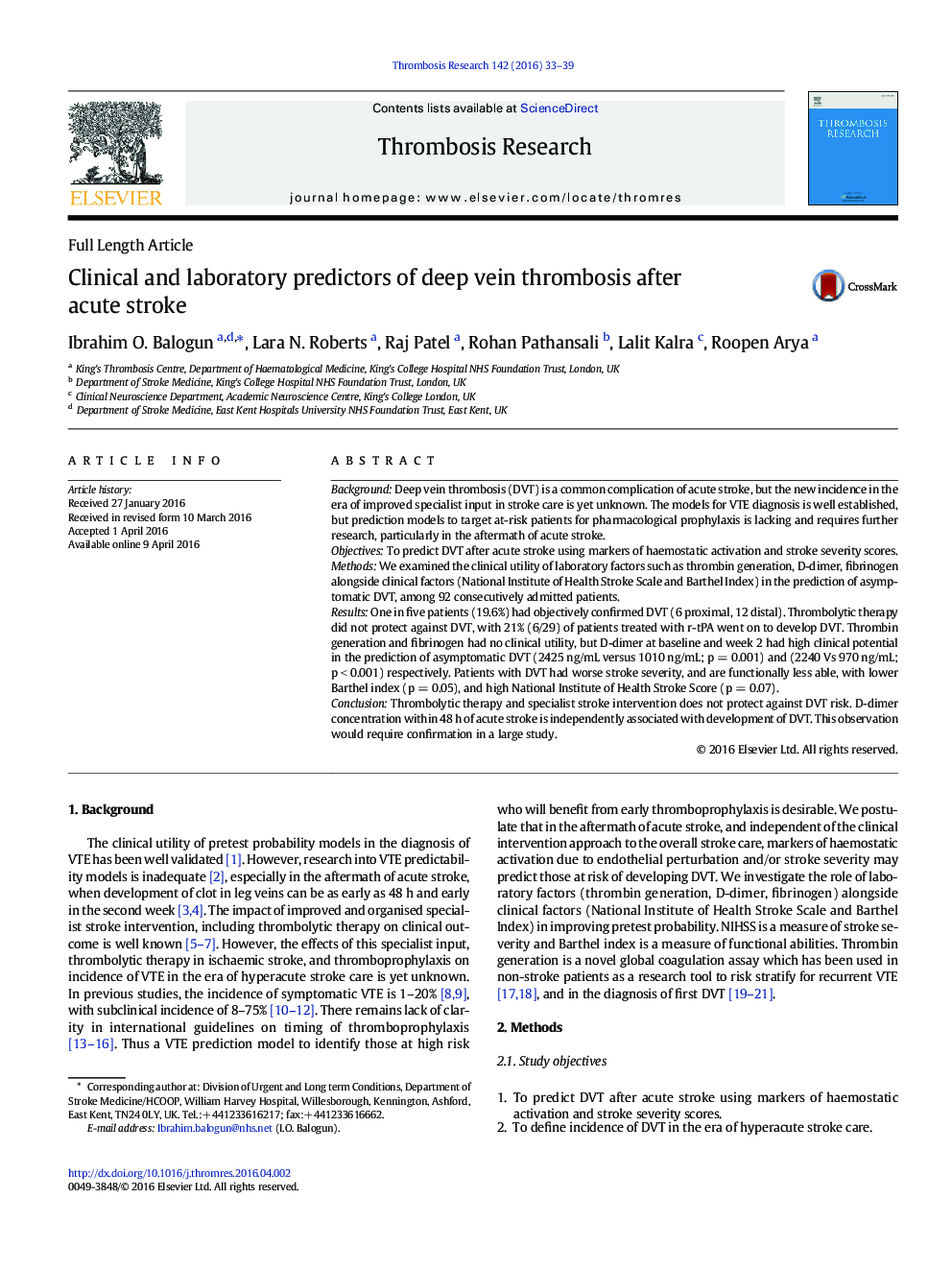| Article ID | Journal | Published Year | Pages | File Type |
|---|---|---|---|---|
| 6000516 | Thrombosis Research | 2016 | 7 Pages |
Clinical and laboratory predictors of DVT (Highlight of key findings)What we knewâ¢Subclinical deep vein thrombosis remain a common clinical problem after acute strokeâ¢Baseline D-dimer within 48 hours of admission best predict post stroke DVTâ¢Baseline D-dimer â¥Â 1500ng/mL has > 70% sensitivity and specificity in the prediction of post stroke DVTâ¢Inclusion of admission D-dimer in DVT prediction model is desirable for future investigationsWhat is newâ¢Thrombin generation has no clinical utility in the prediction of post stroke DVTâ¢Thrombolytic therapy does not protect against post stroke DVT
BackgroundDeep vein thrombosis (DVT) is a common complication of acute stroke, but the new incidence in the era of improved specialist input in stroke care is yet unknown. The models for VTE diagnosis is well established, but prediction models to target at-risk patients for pharmacological prophylaxis is lacking and requires further research, particularly in the aftermath of acute stroke.ObjectivesTo predict DVT after acute stroke using markers of haemostatic activation and stroke severity scores.MethodsWe examined the clinical utility of laboratory factors such as thrombin generation, D-dimer, fibrinogen alongside clinical factors (National Institute of Health Stroke Scale and Barthel Index) in the prediction of asymptomatic DVT, among 92 consecutively admitted patients.ResultsOne in five patients (19.6%) had objectively confirmed DVT (6 proximal, 12 distal). Thrombolytic therapy did not protect against DVT, with 21% (6/29) of patients treated with r-tPA went on to develop DVT. Thrombin generation and fibrinogen had no clinical utility, but D-dimer at baseline and week 2 had high clinical potential in the prediction of asymptomatic DVT (2425 ng/mL versus 1010 ng/mL; p = 0.001) and (2240 Vs 970 ng/mL; p < 0.001) respectively. Patients with DVT had worse stroke severity, and are functionally less able, with lower Barthel index (p = 0.05), and high National Institute of Health Stroke Score (p = 0.07).ConclusionThrombolytic therapy and specialist stroke intervention does not protect against DVT risk. D-dimer concentration within 48 h of acute stroke is independently associated with development of DVT. This observation would require confirmation in a large study.
